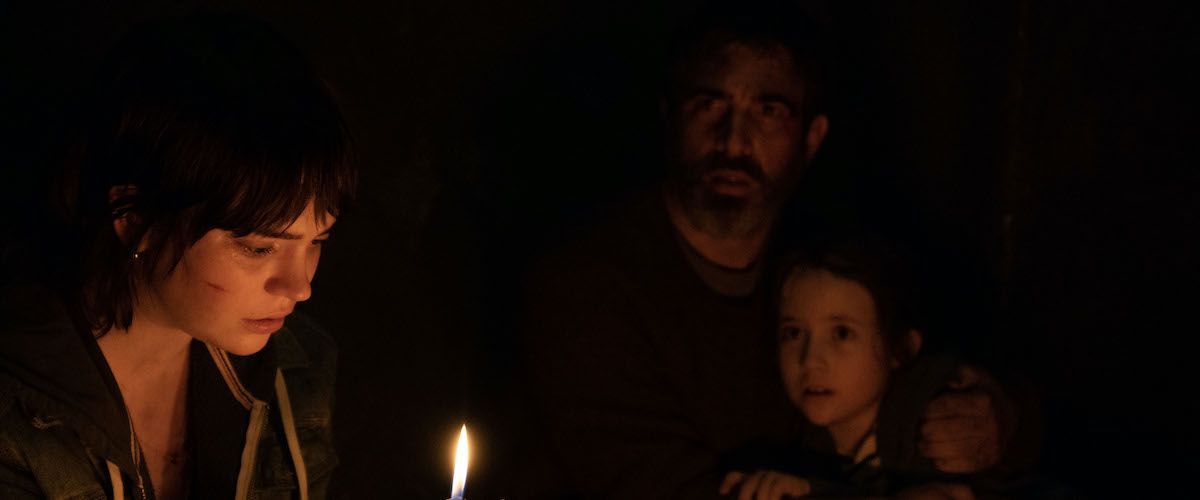Jonah Naplan June 2, 2023
“The Boogeyman” is a remarkably unremarkable horror movie. Director Rob Savage of found-footage acclaim, bringing to life such films as “Host” and “Dashcam,” has here been let off his leash, allowed to explore the modern-day horror genre, with real camerawork, a feature length runtime, and, to our dismay, plenty of limitations. Pulling off PG-13 horror is hard, and it’s an incredibly difficult world to penetrate. Luckily, Savage is working with writers Scott Beck and Bryan Woods—helmers of both masterful, and PG-13 rated, “A Quiet Place” films—and additional team member Mark Heyman, who helped to write Darren Aronofsky’s “Black Swan,” assisting him in making at least a half-baked, moderately scary, and overall decent time at the movies.
Ushering in all the feels and pathos, this iteration of Stephen King’s famous short story from 1978 follows the grieving Harper family, mourning the recent loss of their beloved matriarch. The oldest daughter, Sadie (Sophie Thatcher) and the much younger Sawyer (Vivien Lyra Blair) are two very close siblings, grown closer by the loss of their parent. The father, Dr. Will Harper (Chris Messina) is a therapist, welcoming estranged patients into the family’s home on a daily basis. One day, he invites a mysterious and disheveled man into his office without phone consultation or appointment. This turns out to be a grave mistake as the man reveals himself to be Lester Billings (David Dastmalchian), an outcast accused of murdering all three of his children.
Lester desperately claims these accusations are false, and that the means in which his children’s lives were taken was the work of a much darker entity, infamously known as the Boogeyman. Dr. Harper assures Lester that he believes his story, but later calls the police to let them know about the dangerous man he’s just spoken with. When Sadie arrives home from school that afternoon, she’s terrified by scary noises throughout their creakiest of creaky homes, and her exploration leads her right to where Lester has hung himself in the closet of the deceased mother’s studio.
As we already assumed, Lester was telling the truth. He did not in fact kill his children, and the Boogeyman is very much so a real monster. But unfortunately for the Harper family, Lester has now lured the anomaly into their home, signaling a chain of horrific events that tug the family through hell and back again. Slamming doors, scary sounds, menacing red eyes in the swaths of darkness that engulf every room in the house—it’s all stuff we see in, you know, horror movies. And it’s all way too typical to be intriguing.
Because of its rating, “The Boogeyman” is very restricted by what violence it can and can’t show. And you especially feel that limitation in a second act that falls subject to the boring trope of walking around a house, room to room, as scary things jump out at characters. Therefore, “The Boogeyman” must rely an inhumane amount on jump scares and suggestion of extreme violence to succeed.
For example, the film opens with a scene of a toddler—Lester’s toddler—getting killed by the title monster. The camera does a full circle around the nursery, panning away from the carnage as it’s happening. Not that I’d prefer to see a two-year-old slaughtered rather than not, but I’ve found that even the greatest horror movies don’t much care about whether the viewer is comfortable or unperturbed while watching. “The Boogeyman” should have shown us that bloodshed. It should have let us curl up squeamishly in our seats, dreading the rest of the butchery that was sure to follow.
There’s some nifty ideas dispersed throughout “The Boogeyman,” but Rob Savage and his team of writers feel disappointingly restrained throughout the entire film. When compared to other big screen adaptations of Stephen King’s work, this one feels oh-so-drearily tame. Even the surprisingly bloodbath-resistant “It” from 2017 feels more risky than this, and most of that film’s runtime was devoted to the coming-of-age, puberty-driven lives of a group of children.
That said, the first phrase of the last paragraph stands true. There’s a gleefully grotesque series of events involving a missing tooth, a few close to innovative uses of quick-cut camerawork, and a climax reminiscent to that of “A Quiet Place” in all the right ways. But “The Boogeyman”’s strongest element is its performances, a small but mighty lineup of impressive, expressive caricatures. Messina is slowly but surely gearing up to become one of my favorite actors working today, a man who can be astoundingly funny, but also compelling in more serious roles.
Vivien Lyra Blair is one of the better child actors I’ve seen in film this year, communicating worlds with her timid personality and expressive eyes. But the real spotlight goes to Thatcher, the film’s MVP who appears in most scenes, holding down the fort when it threatens to fly away in the wind. Even when the film tosses thinly written bullies, pretentious friends, and unnecessary Boogeyman lore her way, she stands strong.
Yet the performances never seem to be quite enough, especially because they, and the film, are played almost entirely with a straight face. This is, for the most part, a bleak and humorless movie, that deals competently enough with harsh themes of grief, regret, and longing. But that’s not what a “Boogeyman” adaptation can, or more importantly, should be. The word “Boogeyman” itself is a funny term. It suggests a ghoul that is not actually terrifying at all when put through the limelight, but is played, knowingly and jokingly, as the scariest thing in the world, all for the audience’s enjoyment. But this “Boogeyman” is played entirely with grim candidness, so much so that it skips over letting us bathe in the absurdity of it all. Rob Savage has committed a cardinal sin in the realm of monster movie cinema: he forgets to let us have fun.
Now playing in theaters.

